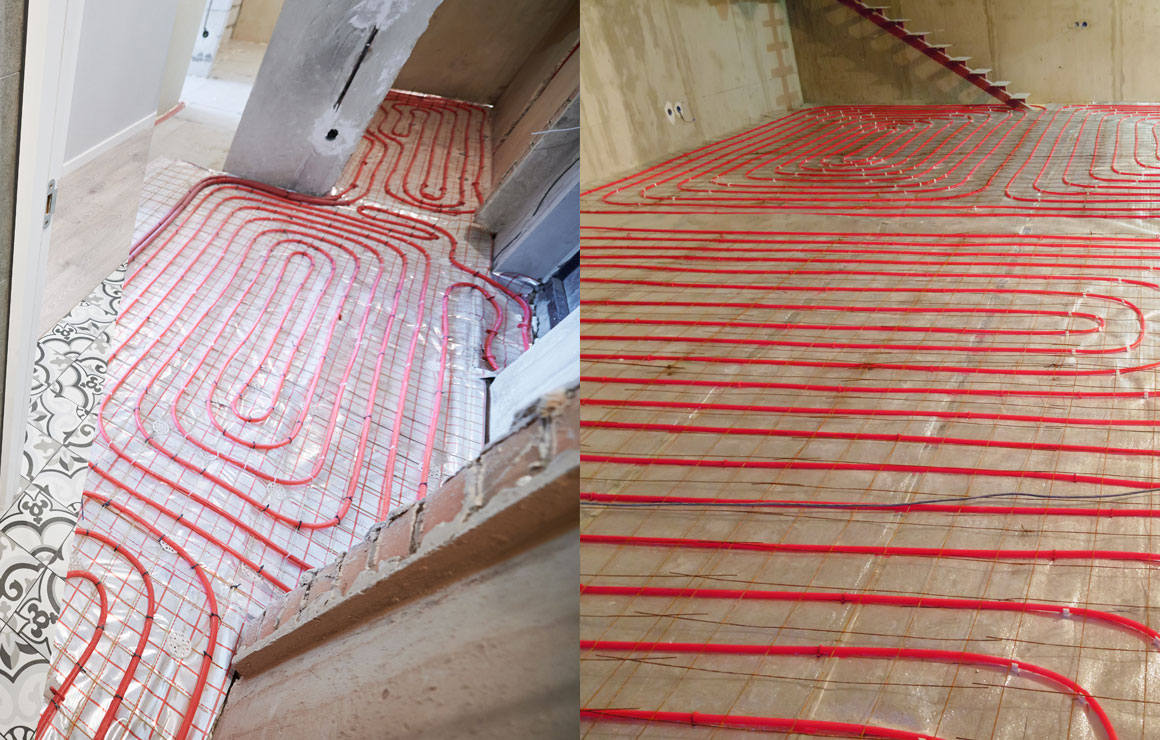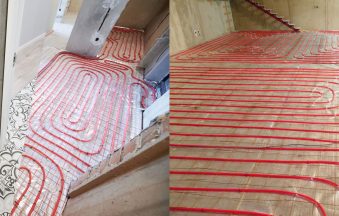Underfloor Heating for Small vs. Large Spaces: What You Need to Know
Underfloor heating is quickly becoming the go-to solution for modern home heating – offering discreet, even warmth that enhances both comfort and energy efficiency. But when it comes to installation, one size does not fit all. Whether you’re heating a cosy bathroom or an expansive open-plan living area, understanding the nuances of underfloor heating for small versus large spaces is essential. In this post, we’ll dive into the key differences, benefits, and challenges of installing underfloor heating in various-sized spaces, and share tips to maximise efficiency and comfort.
What Is Underfloor Heating?
Underfloor heating systems are installed beneath your flooring to radiate heat evenly across a room. There are two main types:
- Hydronic (Water-Based) Systems: These circulate warm water through a network of pipes and are ideal for larger areas where lower temperature operation helps reduce energy consumption.
- Electric Systems: Using cables or mats, these systems are perfect for smaller spaces or retrofit projects due to their ease of installation and precise control.
Both systems eliminate bulky radiators, offering a sleek, modern aesthetic and unobstructed floor space.
Underfloor Heating in Small Spaces
Key Benefits for Compact Areas
In small spaces – such as bathrooms, kitchens, or individual rooms – underfloor heating offers several advantages:
- Quick Warm-Up Times: With a smaller area to heat, these systems warm up faster, ensuring immediate comfort.
- Enhanced Comfort: Radiant heat from below provides a consistently warm floor, perfect for spaces where you often walk barefoot.
- Space-Saving Design: Without the need for traditional radiators, small rooms maintain an uncluttered, modern look.
- Energy Efficiency: Operating at lower temperatures, underfloor heating in small spaces can reduce energy bills while delivering targeted warmth.
Design Considerations for Small Areas
When installing underfloor heating in compact spaces, consider:
- Flooring Choice: Materials with high thermal conductivity – like tile or engineered wood – help maximise heat transfer.
- Zoning: Even in a small area, zone controls can offer tailored comfort; for instance, a heated bathroom versus a living room with different temperature needs.
- Insulation: Good underfloor insulation is key to preventing heat loss in smaller rooms where every watt counts.
Underfloor Heating in Large Spaces
Benefits and Challenges for Expansive Areas
Large spaces, such as open-plan living areas or commercial environments, come with their own set of benefits and challenges:
- Even Heat Distribution: Underfloor heating shines in large areas, as it eliminates cold spots by providing uniform, radiant warmth.
- Lower Operating Temperatures: Because the heat is spread over a larger surface area, systems can run at lower temperatures, enhancing energy efficiency and lowering operating costs.
- Zoning Flexibility: For extensive spaces, multi-zone controls allow you to heat different areas independently – ideal for open-plan designs where some zones may be unused during parts of the day.
Considerations for Large Installations
When planning underfloor heating for large spaces, keep these points in mind:
- System Design: Larger areas may require more complex piping or mat layouts to ensure even coverage. A professional design can optimise circuit lengths and minimise energy loss.
- Flooring and Insulation: The choice of flooring material and quality of insulation become even more critical in large spaces to ensure efficient heat transfer and reduce wasted energy.
- Cost Efficiency: While the initial installation cost might be higher due to increased materials and labour, the long-term energy savings and improved comfort often outweigh the upfront investment.
Tailoring Your Underfloor Heating System to Your Space
Smart Controls and Zoning
Modern underfloor heating systems can integrate with smart thermostats and zoning controls. These allow you to:
- Set Different Temperatures: Heat only the occupied zones during the day and lower temperatures in less-used areas.
- Automate Schedules: Ensure that your system only runs when needed, optimising energy usage and reducing bills.
- Monitor Energy Consumption: Smart controls help you track usage and adjust settings for maximum efficiency.
Flooring Compatibility and Aesthetic Integration
The success of your underfloor heating installation is closely tied to your choice of flooring:
- For Small Spaces: Thin, high-conductivity materials like ceramic tile or luxury vinyl are perfect.
- For Large Spaces: Durable options such as engineered wood or stone tiles can provide both aesthetic appeal and efficient heat transfer.
Ensuring the flooring is compatible with your heating system is essential to achieving both energy efficiency and a seamless look.
Conclusion
Whether you’re looking to warm a small, intimate space or an expansive area, underfloor heating offers a versatile, energy-efficient solution that can be tailored to your specific needs. In small spaces, the benefits include quick warm-up times and a sleek, clutter-free design, while large spaces benefit from even heat distribution and flexible zoning options. With careful planning, proper installation, and the right choice of materials, underfloor heating can transform your home into a model of modern, efficient living – no matter the size of the space.
Ready to explore how underfloor heating can be tailored to your home? Contact a certified installer today to get expert advice and design a system that’s perfect for your unique space.







